Potřebujeme váš souhlas k využití jednotlivých dat, aby se vám mimo jiné mohly ukazovat informace týkající se vašich zájmů. Souhlas udělíte kliknutím na tlačítko „OK“.
ASTM D4945-12
Standard Test Method for High-Strain Dynamic Testing of Deep Foundations
Automaticky přeložený název:
Standardní zkušební metoda pro High-kmene dynamické zkoušky hlubinných
NORMA vydána dne 1.5.2012
Informace o normě:
Označení normy: ASTM D4945-12
Poznámka: NEPLATNÁ
Datum vydání normy: 1.5.2012
Kód zboží: NS-29237
Počet stran: 9
Přibližná hmotnost: 27 g (0.06 liber)
Země: Americká technická norma
Kategorie: Technické normy ASTM
Kategorie - podobné normy:
Zemní práce. Hloubicí práce. Budování základů. Podzemní práce
Anotace textu normy ASTM D4945-12 :
Keywords:
augered piles, deep foundations, drilled shafts, driven piles, driving stresses, dynamic testing, pile bearing capacity, pile driving hammer performance, pile integrity, ICS Number Code 93.020 (Earth works. Excavations. Foundation construction. Underground works)
Doplňující informace
| Significance and Use | ||||||||||||||
|
Based on the measurements from strain or force, and acceleration, velocity, or displacement transducers, this test method obtains the force and velocity induced in a pile during an axial impact event (see Figs. 1 and 2). The Engineer may analyze the acquired data using engineering principles and judgment to evaluate the integrity of the pile, the performance of the impact system, and the maximum compressive and tensile stresses occurring in the pile. If sufficient axial movement occurs during the impact event, and after assessing the resulting dynamic soil response along the side and bottom of the pile, the Engineer may analyze the results of a high-strain dynamic test to estimate the ultimate axial static compression capacity (see Note 1). Factors that may affect the axial static capacity estimated from dynamic tests include, but are not limited to the: (1) pile installation equipment and procedures, (2) elapsed time since initial installation, (3) pile material properties and dimensions, (4) type, density, strength, stratification, and saturation of the soil, or rock, or both adjacent to and beneath the pile, (5) quality or type of dynamic test data, (6) foundation settlement, (7) analysis method, and (8) engineering judgment and experience. If the Engineer does not have adequate previous experience with these factors, and with the analysis of dynamic test data, then a static load test carried out according to Test Method D1143/D1143M should be used to verify estimates of static capacity and its distribution along the pile length. Test Method D1143/D1143M provides a direct and more reliable measurement of static capacity. Note 1—The analysis of a dynamic test will under predict the ultimate axial static compression capacity if the pile movement during the impact event is too small. The Engineer should determine how the size and shape of the pile, and the properties of the soil or rock beneath and adjacent to the pile, affect the amount of movement required to fully mobilize the static capacity. A permanent net penetration of as little as 2 mm per impact may indicate that sufficient movement has occurred during the impact event to fully mobilize the capacity. However, high displacement driven piles may require greater movement to avoid under predicting the static capacity, and cast-in-place piles often require a larger cumulative permanent net penetration for a series of test blows to fully mobilize the capacity. Static capacity may also decrease or increase over time after the pile installation, and both static and dynamic tests represent the capacity at the time of the respective test. Correlations between measured ultimate axial static compression capacity and dynamic test estimates generally improve when using dynamic restrike tests that account for soil strength changes with time (see 6.8). Note 2—Although interpretation of the dynamic test analysis may provide an estimate of the pile's tension (uplift) capacity, users of this standard are cautioned to interpret conservatively the side resistance estimated from analysis of a single dynamic measurement location, and to avoid tension capacity estimates altogether for piles with less than 10 m embedded length. (Additional transducers embedded near the pile toe may also help improve tension capacity estimates.) If the Engineer does not have adequate previous experience for the specific site and pile type with the analysis of dynamic test data for tension capacity, then a static load test carried out according to Test Method D3689 should be used to verify tension capacity estimates. Test Method D3689 provides a direct and more reliable measurement of static tension capacity. Note 3—The quality of the result produced by this test method is dependent on the competence of the personnel performing it, and the suitability of the equipment and facilities used. Agencies that meet the criteria of Practice D3740 are generally considered capable of competent and objective testing/sampling/inspection/etc. Users of this test method are cautioned that compliance with Practice D3740 does not in itself assure reliable results. Reliable results depend on many factors; Practice D3740 provides a means of evaluating some of those factors.
|
||||||||||||||
| 1. Scope | ||||||||||||||
|
1.1 This dynamic test method covers the procedure for applying an axial impact force with a pile driving hammer or a large drop weight that will cause a relatively high strain at the top of an individual vertical or inclined deep foundation unit, and for measuring the subsequent force and velocity response of that deep foundation unit. High-strain dynamic testing applies to any deep foundation unit, also referred to herein as a “pile,” which functions in a manner similar to a driven pile or a cast-in-place pile regardless of the method of installation, and which conforms with the requirements of this test method. 1.2 This standard provides minimum requirements for dynamic testing of deep foundations. Plans, specifications, or provisions (or combinations thereof) prepared by a qualified engineer may provide additional requirements and procedures as needed to satisfy the objectives of a particular test program. The engineer in responsible charge of the foundation design, referred to herein as the “Engineer”, shall approve any deviations, deletions, or additions to the requirements of this standard. 1.3 The proper conduct and evaluation of high-strain dynamic tests requires special knowledge and experience. A qualified engineer should directly supervise the acquisition of field data and the interpretation of the test results so as to predict the actual performance and adequacy of deep foundations used in the constructed foundation. A qualified engineer shall approve the apparatus used for applying the impact force, driving appurtenances, test rigging, hoist equipment, support frames, templates, and test procedures. 1.4 The text of this standard references notes and footnotes which provide explanatory material. These notes and footnotes (excluding those in tables and figures) shall not be considered as requirements of the standard. The word “shall” indicates a mandatory provision, and the word “should” indicates a recommended or advisory provision. Imperative sentences indicate mandatory provisions. 1.5 The values stated in SI units are to be regarded as standard. No other units of measurement are included in this standard. 1.6 All observed and calculated values shall conform to the guidelines for significant digits and rounding established in Practice D6026. 1.7 The method used to specify how data are collected, calculated, or recorded in this standard is not directly related to the accuracy to which the data can be applied in design or other uses, or both. How one applies the results obtained using this standard is beyond its scope. 1.8 This standard does not purport to address all of the safety concerns, if any, associated with its use. It is the responsibility of the user of this standard to establish appropriate safety and health practices and determine the applicability of regulatory limitations prior to use. For a specific precautionary statement, see Note 4. |
||||||||||||||
| 2. Referenced Documents | ||||||||||||||
|
Podobné normy:
Historická
1.7.2014
Historická
1.11.2013
Historická
1.11.2013
Historická
1.11.2013
Historická
1.1.2008
Historická
1.3.2014
Odebírejte informace o nově vydaných normách ZDARMA:
Chcete pravidelně odebírat informace o nově vycházejících normách z celého světa a to zcela zdarma?
Přihlašte se k odběru. Vše je velice jednoduché a absolutně ZDARMA.
Na výběr máte vydavatele z celého světa.


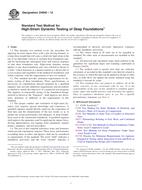
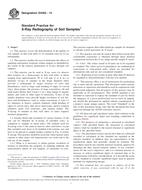 ASTM D4452-14
ASTM D4452-14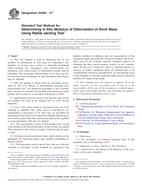 ASTM D4506-13e1
ASTM D4506-13e1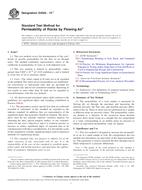 ASTM D4525-13e1
ASTM D4525-13e1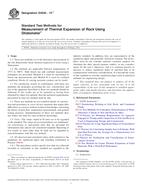 ASTM D4535-13e1
ASTM D4535-13e1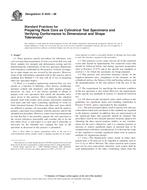 ASTM D4543-08
ASTM D4543-08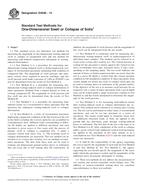 ASTM D4546-14
ASTM D4546-14
 Cookies
Cookies
